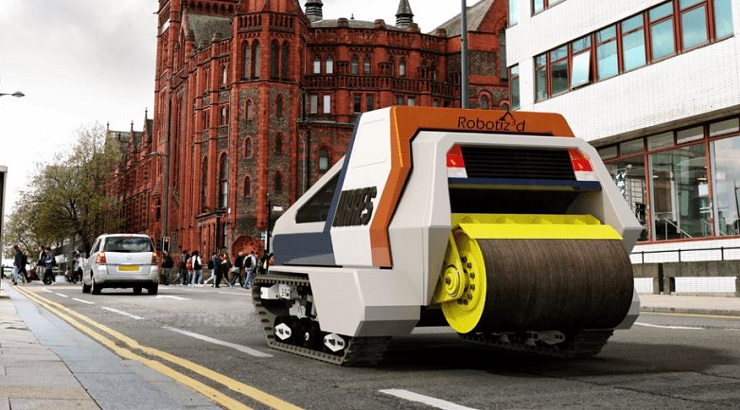Heavy Equipment
World’s First AI Pothole Repair Robot Hits the Roads
The robot uses AI to automatically detect and repair damaged roads.

A futuristic robot that uses artificial intelligence (AI) to automatically detect, classify, and repair potholed roads has been unveiled in the United Kingdom.
Dubbed ARRES (Autonomous Road Repair System) PREVENT, the autonomous robot has just undergone successful proof-of-concept testing and is now set for deployment on roads in Hertfordshire for real-world testing.
ARRES PREVENT, a collaboration between tech company Robotiz3d, academics at the University of Liverpool, and highway engineers at Hertfordshire County Council, is capable of working 70% faster than human workers.
If the test is successful, the robot could catch and repair cracks before they become too big to fix quickly. This could make road work cheaper, more efficient, and faster compared with human workers.
The robot, however, is meant to complement human teams.
“The intention is to use the AI Robot alongside our human crews rather than to replace them,” says a spokesperson of Hertfordshire County Council.
“It will find and seal cracks in the road autonomously while our team gets on with other work, helping us get more work done in a single set of works to prevent future potholes while reducing disruption to the public.”
RELATED: JCB Unveils Machine That Seals Potholes in Under 8 Minutes
Independent patrol of roads and scanning with cameras of the surface allow ARRES PREVENT to detect depressions in the road surface.
Upon identifying an imperfection, the pothole repair robot will decide whether to repair it on the spot or add the damage to the queue for further review.
In case of immediate action, the robot will fill the crack with filling material to ensure that no water passes through the cracks and causes further damage.
As Robotiz3d explained, though the robot is not capable of filling larger potholes, it is proactive in its ambition to prevent such potholes from forming in the first place.
ARRES PREVENT marks a quantum leap into the future of road maintenance, showcasing what autonomous robots and AI can do in solving infrastructure-related problems.
This collaboration between a tech company, academics, and a county council truly represents a step into a forward-thinking approach. It binds technological innovation, research acumen, and local governance in a package that makes up an effective solution.














